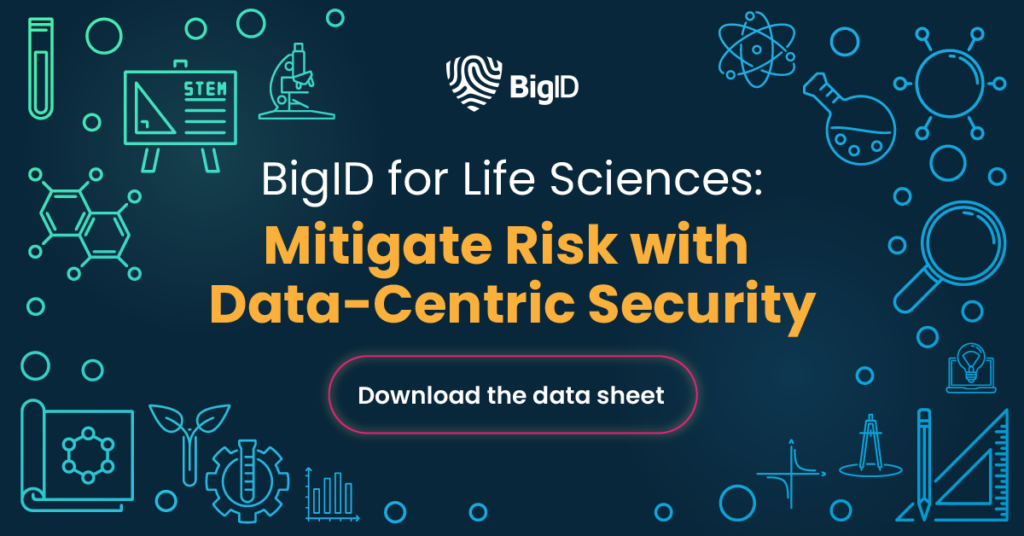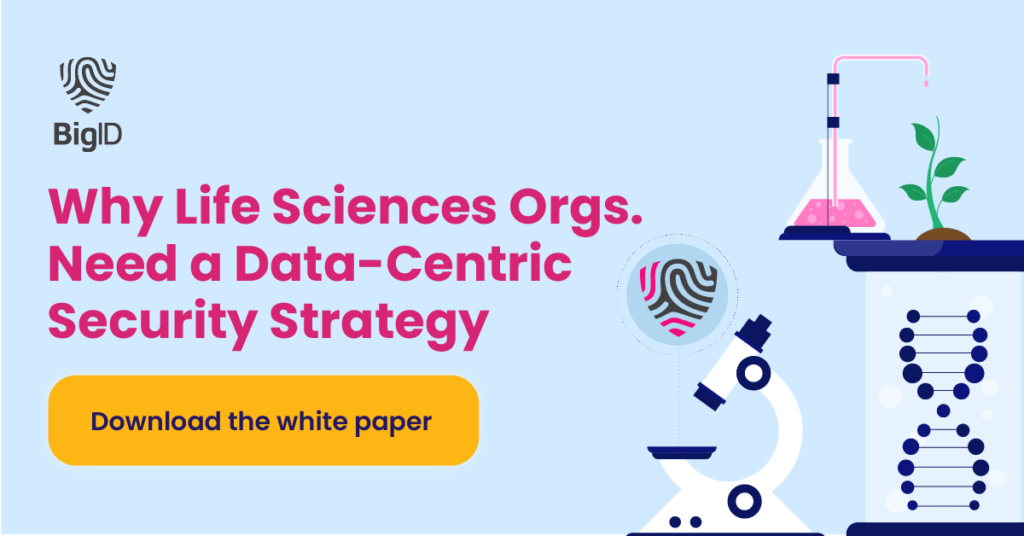The life sciences industry is going through a fundamental digital shift within its operations, which is forecasted to evolve patient delivery services, manufacturing processes, and supply chains. The sector is transforming how they leverage technology and manage digital capabilities post-pandemic. This industry consistently confronts third-party system reliances and service providers, fiscal pressures, and an increasingly complex regulatory landscape. These challenges dramatically increase and complicate the financial, technological, compliance, and regulatory risks faced by pharmaceutical, biotech, environmental sciences, healthcare technologies, and medical device companies.
Why Life Sciences Need a Data-Centric Security Strategy
The life sciences industry must protect information against cyberattacks to unlock its potential with data, analytics, IoT, wearable technologies, and artificial intelligence. However, life sciences continue to be a primary target for cyberattacks due to the high value of health data and intellectual property (IP) and the high profitability of these global businesses. The average data breach cost in the pharmaceutical industry, including life sciences, is $5.2 million. Data breaches remain a significant issue, leaving life sciences companies vulnerable.
In addition to protecting against cyber attacks, life sciences must comply with increasing data privacy laws and regulatory requirements. These include the Health Insurance Portability and Accountability Act (HIPAA), Health Information Technology for Economic and Clinical Health (HITECH) Act, EU Medical Devices Regulation (EU MDR), EU General Data Protection Regulation (GDPR), and the California Consumer Privacy Act (CCPA). Compliance with data protection and privacy regulations ensures the security of sensitive data, reducing regulatory costs and risks for the life sciences sectors.

Life Sciences Data Security Challenges
According to a recent Accenture report, life science organizations are more than likely to lose $642 billion globally to cyber-attacks over the next five years. That puts the industry on notice, as life sciences face specific challenges regarding protecting data and must consider a wide range of emerging risks as they adapt business practices to changing regulatory compliance and market-driven pressures.
This industry must confront various challenges:
- Massive Volumes of Data: Identifying sensitive, business-critical, and protected health information (PHI) can take months and even years. Life Sciences organizations must discover and map data for compliance, privacy, security, remediation, access governance, cloud migrations, minimization, and risk mitigation.
- Unstructured Data: Health-related data in unstructured sources is challenging to manage because it is high-volume, resource-heavy, complex to classify at scale, and more difficult to achieve successful results.
- Complex Data Ecosystems: Lifes Sciences has unique data ecosystems, including legacy software, cloud-based applications, and third-party data sharing. The industry needs reliable data, but non-compliant and mismatched data from different sources and systems increases the risk of data breaches.
- Connected Devices: The increased consumerization of healthcare has led to direct patient or customer interactions across connected devices. Even though new online and mobile services create business growth, they also increase consumer data across digital channels, which makes improving data security critical within Life Sciences.
- Cyberattacks & Insider Threats: Intellectual property is the most highly prized data, comprising 95% of all life science cyberattacks, from drug formulas to medical device blueprints. Due to the value of intellectual property, cyber-attacks and insider threats will continue to be a growing problem.
- AI Governance & Security: To adapt generative AI safely and responsibly, Life Sciences organizations need to know that the data trained by GenAI and LLMs is sensitive, personal, secret, or regulated information – and validate that the data is safe for use. Proper AI governance is necessary to prevent breaches, leaks, and fines as AI technologies and regulations continue to increase and expand.
- Cloud Migrations: For Life Sciences, transferring digital assets from on-premises to cloud-based environments is a complex endeavor with data privacy, security, and data management issues that can lead to non-compliance.
- Non-Compliance: Life Sciences must demonstrate compliance with various government and industry-specific regulations in an automated, data-centric, and cost-effective manner. Regulatory non-compliance can result in steep fines for both the organizations and executives.
- M&A Activity: The life sciences sector has undergone significant consolidation in recent years, which can create the risk of an incoherent ecosystem that could leave organizations vulnerable to cyberattacks.
How BigID Helps Life Sciences Protect Data and Achieve Compliance
Organizations in life sciences need a data-centric, risk-aware security approach to safeguard their most important data. BigID combines industry expertise with advanced technology, data security, and analytics to transform regulatory operations and drive growth while maintaining compliance. BigID enables life sciences organizations to gain complete visibility and insights into critical business data, manage risk, address data vulnerabilities, enforce security policies, secure data, and comply with regulatory requirements. With BigID’s security-by-design approach, you can:
- Know Your Data: BigID creates a unified view of sensitive data, including structured, semi-structured, and unstructured data in on-prem environments and across the cloud.
- Reduce Your Attack Surface: Clean up duplicate, similar, and redundant information that likely poses a security risk. Reduce the attack surface — or the number of vulnerable touchpoints in the event of a breach.
- Improve the Security of Critical Data: Improve data security posture by identifying, scoring, and prioritizing the most valuable information (customer, financial, IP, and health data records) to assess risk by severity related to sensitivity, location, accessibility, and more.
- Mitigate Insider Risk: BigID enables organizations to identify and flag overprivileged users, third parties, and remote workers with uninhibited access to sensitive information. Monitor, detect, and respond to unauthorized exposure, data usage, and suspicious activity around sensitive data.
- Simplify Regulatory Compliance: With BigID, organizations can automate compliance with end-to-end privacy and security capabilities to protect personal, sensitive, and regulated data.
- Streamline Data Breach Response: Quickly and accurately detect and investigate breach impact, facilitate prompt incident response, and notify relevant authorities and affected consumers. Generate automated reports for regulators and auditors to meet breach notification requirements and ensure compliance.
- Accelerate AI Security: Efficiently build policies to govern AI based on privacy, sensitivity, regulation, and access to control the data shared with LLMs and AI applications.
- Maximize M&A Strategy: BigID helps life sciences organizations avoid common pitfalls, safeguard customer information, and manage data through every phase of an M&A initiative.
- Secure Cloud Migrations: With a security-centric approach, BigID empowers organizations to execute successful cloud migrations from a unified data inventory to data minimization to policy enforcement.

